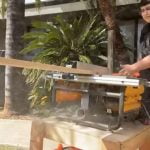Are you someone who is interested in learning the art of woodworking with old hand tools? Whether you are a beginner or looking to improve your skills, this article will guide you through the process of embracing the timeless craft of woodworking. The use of old hand tools adds a sense of tradition and authenticity to woodworking, making it a deeply rewarding experience for those who appreciate the beauty of working with wood.
Woodworking with old hand tools allows for a deeper connection with the materials and the process, creating a unique and fulfilling experience for craftsmen. In this article, we will explore how you can get started, learn essential techniques, and find resources to help you along your woodworking journey. From gathering essential hand tools to finding online communities for support and inspiration, we will cover everything you need to know to begin your adventure in woodworking with old hand tools.
By understanding the different types of hand tools available, learning how to sharpen and maintain them, and practicing essential techniques, you can develop the skills necessary to create beautiful projects with old hand tools. Whether you are drawn to the simplicity and elegance of traditional woodworking or simply want to expand your skill set, embracing this craft can open up a world of creativity and satisfaction.
So, let’s dive into the enchanting world of woodworking with old hand tools and discover how you can begin your journey today.
Getting Started
When it comes to learning woodworking with old hand tools, the first step is to gather the essential tools you will need for the craft. While power tools may seem more convenient, there is a unique satisfaction in using traditional hand tools that have been around for centuries. Here are some essential hand tools you will need to get started:
Saws
One of the most basic and essential hand tools for woodworking is a good quality saw. There are different types of saws such as crosscut saws, rip saws, and dovetail saws, each serving a specific purpose in woodworking. Learning how to use these saws effectively is crucial in mastering traditional woodworking techniques.
Planes
Hand planes are another indispensable tool for woodworking. They are used for shaping and smoothing wood surfaces. Understanding the different types of planes and their functions, such as jack planes, smoothing planes, and block planes, is essential for anyone looking to learn traditional woodworking.
Chisels
Chisels are versatile hand tools used for carving, shaping joints, and removing waste from wood. They come in various sizes and shapes and are an important part of any woodworker’s toolkit. Learning how to use chisels properly and maintaining their sharpness is vital for successful woodworking projects.
Once you have gathered these essential hand tools, it’s important to familiarize yourself with each tool’s function and proper use before starting your first woodworking project.
Learning how to woodwork with old hand tools may seem daunting at first, but with patience, practice, and dedication, anyone can master this timeless craft. Whether you’re interested in creating functional furniture or intricate woodcarvings, embracing traditional woodworking techniques with old hand tools can be a rewarding journey of skill-building and creativity.
So if you’ve been asking yourself “how can I learn to woodwork with old hand tools?” – start by gathering the essential hand tools mentioned above and get ready to embark on this enriching woodworking experience.
Understanding the Different Types of Hand Tools
Woodworking with old hand tools requires an understanding of the different types of essential tools used in this timeless craft. Each tool serves a specific purpose and learning about them is crucial for anyone looking to master woodworking with old hand tools.
Types of Hand Tools
- Saws: From crosscut saws to coping saws, understanding the different types of saws and their uses is essential for any woodworker.
- Planes: Hand planes are used for shaping and smoothing wood. Understanding the different types, such as block planes and bench planes, is important for achieving precision in woodworking.
- Chisels: Chisels are indispensable for carving and shaping wood. Knowing about the different sizes and types of chisels will allow you to work on intricate details in your projects.
- Hammers and Mallets: These tools are used for driving nails, setting joints, and carving. Understanding the differences between hammers and mallets will help you use them effectively in your woodworking projects.
Caring for Your Hand Tools
It’s not enough to just know about the different types of hand tools; it’s also important to learn how to care for them properly. Regular sharpening, cleaning, and maintenance are vital for keeping your hand tools in good working condition. Additionally, learning how to store and protect your hand tools from rust and damage will ensure that they last a lifetime.
Developing Skills With Each Tool
Once you have a good understanding of the various hand tools used in woodworking, it’s crucial to practice using each one. Starting with simple projects that require the use of specific hand tools will allow you to develop skills and familiarity with each tool. Through consistent practice, you can become adept at using old hand tools to create beautiful woodworking projects.
The Art of Sharpening
The key to successful woodworking with old hand tools lies in the art of sharpening and maintaining these tools. Without proper maintenance, even the highest quality hand tools will not perform at their best. Sharpening is a skill that every woodworker must master in order to achieve precise and clean cuts.
One of the most important hand tools in woodworking is the hand plane. This tool requires a sharp blade in order to effectively smooth and flatten wood surfaces. Learning to sharpen a hand plane blade involves using sharpening stones, honing guides, and proper technique. The process of sharpening a hand plane blade can be intimidating for beginners, but with practice and patience, it becomes an essential skill for any woodworker.
In addition to hand planes, chisels are another crucial tool that require regular sharpening. Sharp chisels are essential for making clean and accurate cuts in wood. Learning how to properly sharpen and maintain chisels is an important step in mastering woodworking with old hand tools.
Overall, learning the art of sharpening and maintaining old hand tools is a fundamental aspect of woodworking. By acquiring this skill, woodworkers can ensure that their hand tools perform at their best, allowing them to create beautiful and precise woodworking projects.
| Hand Tool | Maintenance Process |
|---|---|
| Hand Plane | Sharpening stones, honing guides, proper technique |
| Chisels | Regular maintenance for clean and accurate cuts |
Learning the Basics
Woodworking with old hand tools requires a certain level of skill and knowledge in order to create beautiful and functional pieces. Learning the basics of woodworking techniques and skills is essential for anyone looking to embark on this timeless craft.
Understanding Wood Types and Grain
Before you start working with old hand tools, it’s important to understand the characteristics of different types of wood and how their grains can affect your woodworking projects. Some woods are more suitable for certain types of projects, while the direction of the grain can impact the way you cut and shape the wood. Learning about wood types and grain will help you choose the right materials for your projects and work with them effectively.
Measuring, Marking, and Cutting
One of the fundamental skills in woodworking is accurate measuring, marking, and cutting. With old hand tools, precision is key, as there is little room for error when using traditional methods. Learning how to measure and mark wood accurately, as well as mastering various cutting techniques with saws and chisels, is essential for creating well-crafted wooden pieces.
Learning about these basic woodworking techniques and skills can be achieved through various resources such as books, instructional videos, or by seeking guidance from experienced woodworkers. Taking the time to practice and perfect these foundational skills will set you on the right path towards mastering woodworking with old hand tools. Whether you’re interested in creating small decorative items or larger furniture pieces, understanding these essential techniques will be invaluable as you progress in your woodworking journey.
Practice Makes Perfect
Woodworking with old hand tools is a skill that requires patience, dedication, and practice. One of the best ways to learn how to woodwork with old hand tools is by starting with simple projects. This will allow you to develop your skills and gain confidence in using traditional woodworking tools.
To begin, consider starting with small projects such as making a simple wooden box, a picture frame, or a small shelf. These types of projects will help you familiarize yourself with the different hand tools and basic woodworking techniques. It’s important to start with manageable projects so that you can focus on perfecting your skills and building a solid foundation for more complex projects in the future.
As you progress in your woodworking journey, you can gradually take on more challenging projects such as making a small piece of furniture or even intricate joinery work. Remember that practice makes perfect, and the more time you spend working with old hand tools, the more confident and skilled you will become.
| Simple Woodworking Projects | Description |
|---|---|
| Wooden Box | A great project for practicing sawing, planing, and creating basic joinery |
| Picture Frame | An opportunity to hone your chiseling and sanding skills while creating a functional item |
| Small Shelf | An introduction to creating simple assemblies and working with different types of wood |
Building Your Confidence
Once you have familiarized yourself with the basic woodworking techniques and skills using old hand tools, it’s time to challenge yourself and progress to more complex projects. Building your confidence in woodworking with old hand tools takes time and patience, but it can be incredibly rewarding. As you gain experience and hone your skills, you’ll be able to take on more intricate and detailed projects that showcase the beauty of working with traditional hand tools.
One way to progress to more complex projects is by gradually increasing the difficulty level of your woodworking tasks. Start by choosing a project that builds upon the skills you have already mastered, but also introduces new challenges.
This could involve working with different types of wood, incorporating more intricate joinery techniques, or creating pieces with finer details. By pushing your boundaries in a controlled manner, you’ll continue to grow as a woodworker while staying motivated and engaged in the craft.
Another important aspect of building your confidence in woodworking with old hand tools is seeking inspiration from experienced woodworkers and craftsmen. Look for mentorship opportunities or consider joining local workshops and classes where you can learn from others who share your passion for traditional woodworking techniques. Being part of a community of like-minded individuals can provide valuable support, encouragement, and guidance as you tackle more complex projects.
As you progress to more challenging woodworking projects with old hand tools, remember that making mistakes is a natural part of the learning process. Don’t be discouraged by setbacks; instead, view them as opportunities to refine your skills and knowledge. Embracing a growth mindset will help you develop resilience and adaptability as a woodworker, ultimately allowing you to take on even greater projects in the future.
Finding Resources
Woodworking with old hand tools is a timeless craft that requires patience, dedication, and a willingness to learn. Whether you are a beginner or an experienced woodworker, there are resources available to help you improve your skills and knowledge in using traditional hand tools for woodworking.
For those who prefer to learn through reading, there are numerous books available that delve into the art of woodworking with old hand tools. Some recommended titles include “The Essential Woodworker” by Robert Wearing, “The Anarchist’s Tool Chest” by Christopher Schwarz, and “Handplane Essentials” by Christopher Schwarz. These books cover various aspects of woodworking with hand tools, from tool selection and maintenance to essential techniques and projects.
If you prefer a more hands-on approach to learning, workshops and classes can be an invaluable resource. Many woodworking schools and craft centers offer classes specifically focused on traditional hand tool woodworking. These workshops provide the opportunity to learn from experienced instructors, receive personalized guidance, and connect with other like-minded individuals who share a passion for using old hand tools in their woodworking projects.
In addition to books and workshops, online communities can also be a valuable resource for learning woodworking with old hand tools. Platforms such as forums, social media groups, and online video channels provide opportunities to engage with fellow woodworkers, ask questions, share experiences, and gain inspiration for your own projects. Joining these online communities can help you build a network of support and mentorship as you continue to develop your skills in traditional hand tool woodworking.
Conclusion
Woodworking with old hand tools is a timeless craft that brings a sense of satisfaction and connection to the past. While modern power tools may offer convenience, there is something special about working with traditional hand tools that requires skill, patience, and dedication. By embracing the art of woodworking with old hand tools, you can tap into a rich heritage and develop a deeper appreciation for the craft.
As you embark on your journey to learn woodworking with old hand tools, it’s important to remember that it’s a gradual process. Start by gathering essential hand tools such as saws, planes, and chisels, and take the time to understand their different types. Learning how to maintain and sharpen these tools is also crucial in order to ensure they perform at their best.
By taking advantage of resources such as books, workshops, and online communities dedicated to woodworking with old hand tools, you can expand your knowledge and connect with others who share your passion. Whether you’re starting with simple projects or progressing to more complex ones, the key is consistent practice and perseverance. With dedication and patience, you will develop the skills necessary to create beautiful pieces with old hand tools.
In conclusion, learning to woodwork with old hand tools requires dedication and a willingness to learn. Embracing this timeless craft allows for a deeper connection to the art of woodworking while creating lasting pieces that reflect both skill and tradition. So if you find yourself asking “how can I learn to woodwork with old hand tools,” remember that it starts with an open mind, a commitment to learning, and a love for creating something truly special.
Frequently Asked Questions
Can You Do Woodworking With Just Hand Tools?
Woodworking can absolutely be done with just hand tools. In fact, many skilled woodworkers prefer using hand tools for their craftsmanship. Hand tools give a greater sense of control and precision, and they don’t require electricity or expensive machinery.
Can I Teach Myself Woodworking?
Yes, it is definitely possible to teach yourself woodworking. With the wealth of resources available online such as tutorials, videos, and forums, anyone motivated enough can learn the basics of woodworking and gradually improve their skills through practice and experimentation.
Is It Worth Restoring Old Tools?
Restoring old tools can be incredibly worth it for both practical and sentimental reasons. Not only does restoring old tools save money compared to buying new ones, but it also preserves the history and craftsmanship of the tool itself. Plus, there’s a certain satisfaction in bringing new life to something old and forgotten.

Hi everyone! I’m a woodworker and blogger, and this is my woodworking blog. In my blog, I share tips and tricks for woodworkers of all skill levels, as well as project ideas that you can try yourself.





